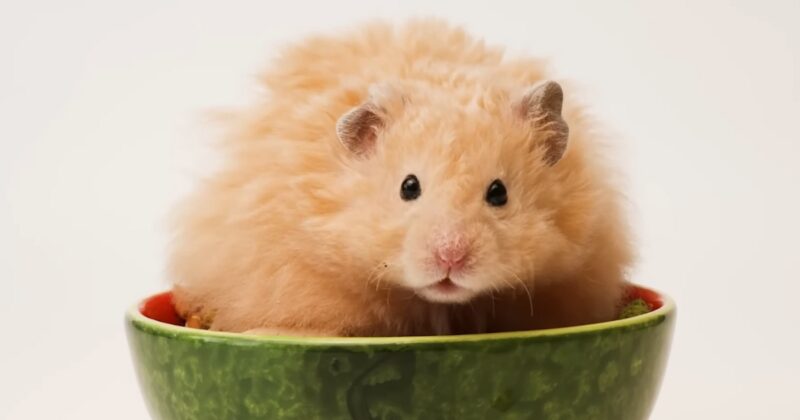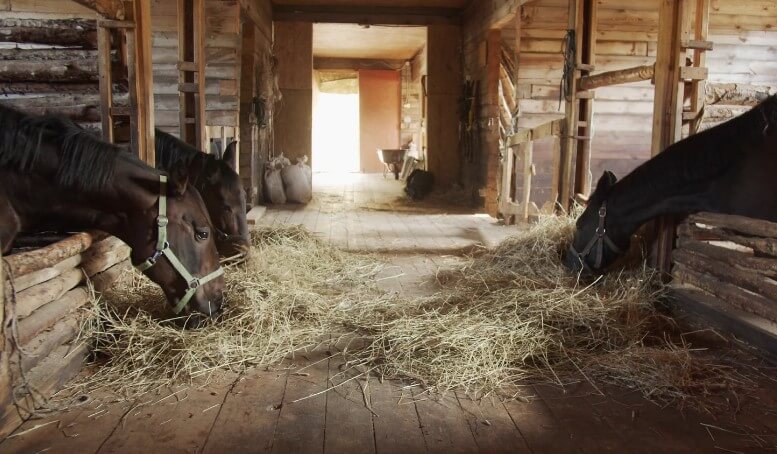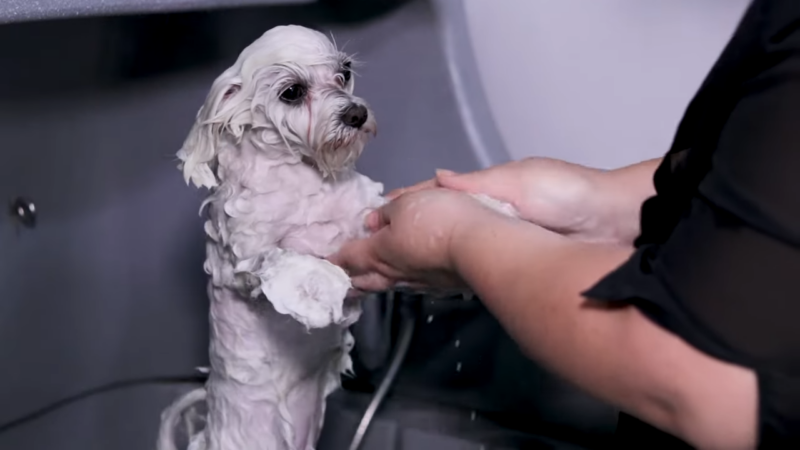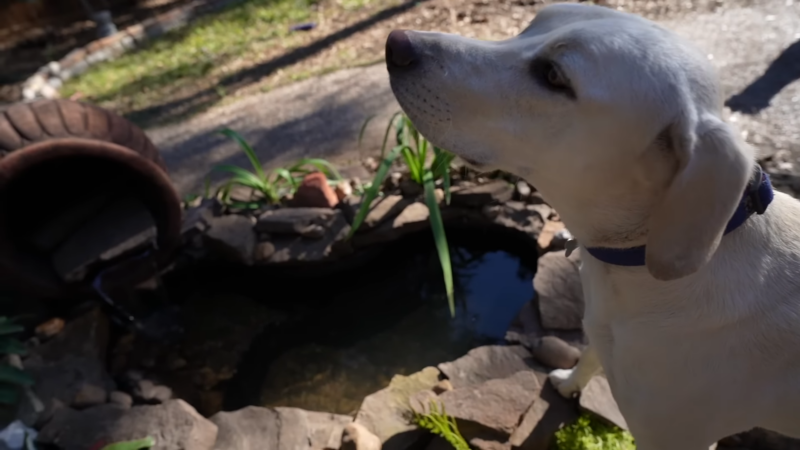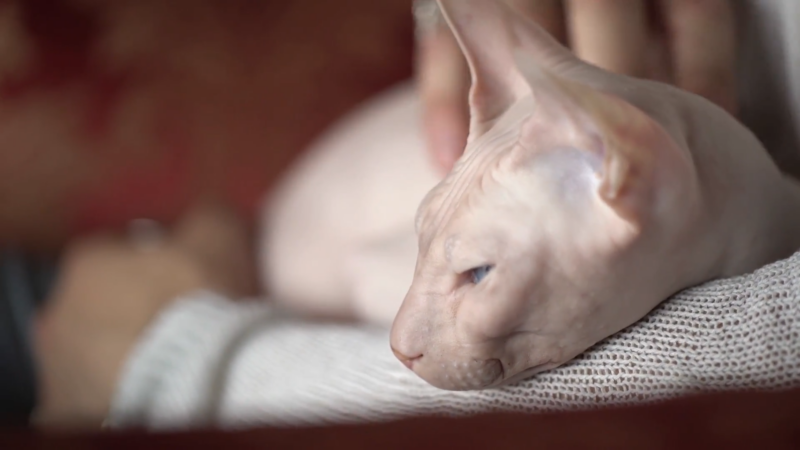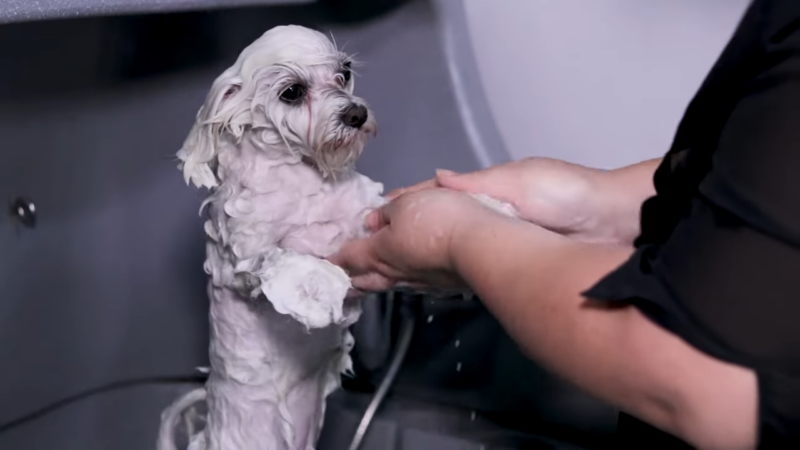
-
Milan
- Published:
- Updated: March 13, 2024
- Category: Pet Names and Types
Share Post:
Planning to get a hamster requires a lot of research to ensure that you find the perfect one according to your lifestyle. When I started my journey as a parent hamster, I started with my teddy bear hamster, Alex, and honestly, it couldn’t have got any better.
Even though hamsters are super fun to be with, there are several factors to be considered before bringing them home to ensure a happy hammy and a happy you. Planning to get a teddy bear hamster as your next pet? Here’s everything you need to know about them:
Characteristics Of Teddy Bear Hamsters
Teddy bear hamsters, also known as Syrian hamsters or golden hamsters, were initially discovered in the country of Syria in the 1800s. However, people started domesticating them only in the 1930’s, and by far they have proven to be the most popular and petted breed around the world.
Thanks to their ease of raising and super friendly nature. They not only deliver their hamster potential as pets but also as model organisms in the laboratory owing to their fast reproduction cycles.
Physical Appearance Of Teddy Bear Hamsters
Famous for their large size, fancy bear hamsters grow about 4-7 inches in length and weigh around 4 ounces. They have a round body coated with different colour variations of fur ranging from golden brown to black. Some also feature a coat of white hair.
Their back end is generally round and elongated hiding their tail almost in the fur. Their paper-thin ears help them identify the slightest of noise whilst their large cheek pouch helps them store food in their mouth. Another unique feature is their stocky pink legs which help them move faster and be agile in case of any expected danger.
What Do The Teddy Bear Hamsters Feed On?
When shopping for your hamster’s supplies, you’ll likely come across a variety of premade and packaged meal formulas for hamsters. Most of these will have claims such as “Complete,” “Balanced” or similar, making the decision a tedious job for all.
So to provide the teddy hamster with their appropriate diet and to make it easier for you all to understand, teddy bear hamsters are omnivorous. To break that definition down into simpler and crisp terms; they savour plants, insects and vegetables. When it comes to serving them with a suitable diet, try the pre-packed muesli packs or pellets for overall growth and a boost to their energy levels.
The only thing to keep in mind is not to give them servings which include high sugar content as it could pose a danger to your pet. Avoid giving them too much of fresh fruits or packs which are loaded with ingredients like honey, syrups and extra sugar.
Life Cycle Of Teddy Bear Hamsters
Teddy bear hamsters are known to live the longest amongst all other breeds owing to their large size. They wean from their mother for about 3-4 weeks and can be separated from their mother after this period.
Once they are four months old, they enter their adulthood stage. However, they keep growing until they are about six months old. The average life expectancy of these animals is 2-3 years. Nevertheless, they can even live up to 5 years, given proper care and nourishment.
How To Foster A Teddy Bear Hamster?
The best part of fostering a teddy bear hamster is that they do not require a peek after every hour or two, it is certainly not required to give them all the attention that a toddler pet would need, for instance, a kitten or a puppy will unquestionably entail all your time and effort into their fostering.
Nevertheless, Hamsters would demand some of the attention so that they are trained not to bite, once they get the hang of living with us, it would prepare the pet to abide by specific rules like being in the cage to stimulate them mentally and physically.
They would need quite a few chews for teething and toys for playing and keeping them busy. It is both comfortable and convenient to take care of a teddy bear hamster; hamsters are by far the best creatures a child could have because these harmless creatures have no will to hurt the child.
Apart from that, another positive outlook of having a teddy bear hamster to yourself is that they are active and agile mostly around dawn, which makes it tune to a perfect time for the sapiens to play with them, caress and stroke them, shower them with the love, warmth, tenderness and so much more.
In the long run, the added advantage is that they do not require much of a daily diet as compared to other pets like dogs and cats; they feed on a peculiar amount of food that necessitates their growth and gives them the energy to survive.
Whilst fostering, it is best if the teddy bear hamster is provided with space which is humongous for them to move, play and burrow when it comes to their roots of existence.
Some Tips For Taming Your Furry Friend
Although extraordinarily loveable and affectionate, hamsters do not love being handled right away and demand time to settle in the new environment. It is always a good idea to build a warm-up session with your little ones so that they become accustomed to your presence.
Like any other hamster breed, teddy bear hamsters also have to undergo the same taming process to build their trust and increase their confidence. As a new owner, chances are your hands may tremble while picking them up. This might scare them away. Make sure you pick them gently and make them feel comfortable.
Here is a step-by-step guide which I used to tame my little one. I can say that this works well, and you can try it too.
Step 1: In the first phase, provide your hammy with a large cage with comfortable bedding. I know it is quite tempting to pick them up and play with them, but before that, it is essential to make them feel safe and secure in the new environment. Let them adapt, relax and be on their own exploring the new place.
Step 2: Be patient and do not rush the process. Once you notice that they have become comfortable enough, start feeding them through the bars of the cage to increase their confidence further.
If they eat, drink or play in your presence, it is an indication that they have started to adapt to the new environment.
Step 3: Now is the time to try introducing your hands to them. Try putting your hands into the cage and offer them treats. Encourage them to come forward and eat from your palm. Allow them to roam around your hand and explore.
Make sure you do not force your hands on them as doing so may lead to getting painful bites from them.
Step 4: Once your hamster gets confident enough to climb on your hands to have treats, you are good to start your playful journey with them. As they climb up your hand, scoop them gently. Lift them with confidence and do not scare them away. Also, do not grab them as they might mistake it to be a threat and play defensively.
Every hamster has its taming journey, and it is essential to be patient with them, allow them to have their time and get comfortable with the new circumstances. It may take a week or maybe a month, depending on their personality and age.
Determination Of Genital Differences In Teddy Bear Hamsters
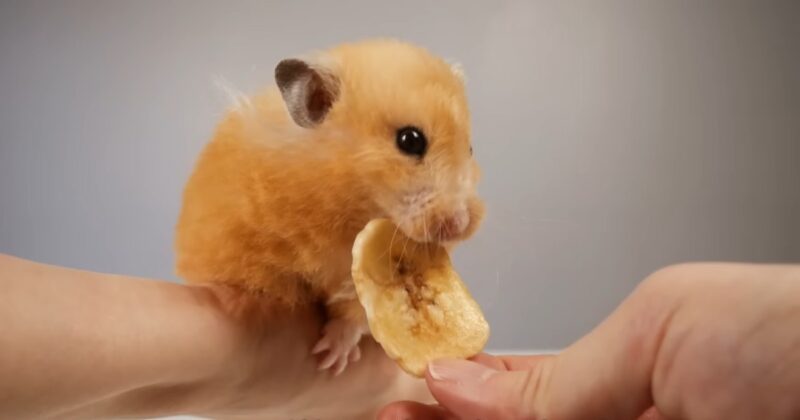
When your little one gives birth to its offerings, it becomes vital to determine their sex to make appropriate caging decisions. Generally, people find the sexing process a bit tricky, especially when the hamster is at a very early stage.
Fostering a teddy bear hamster for more than two years now, I can tell you that the process is not that difficult, you just need to sift through the male and female genitalia, and you will easily be able to tell whether the new member is a male or a female.
Key differences between a female teddy bear hamster and its male counterpart:
- The distance between their anogenital: A hamster has two openings, i.e. their sexual organ and the anus. Female hamsters have very little distance between the two openings, and the area around is bald whereas, in the case of a male hamster, the area is hairy and there is a noticeable distance between the two openings.
- Another way to determine whether the hamster is a male or a female is to observe their testicles. A 4-week-old hamster has noticeable testicles, although they can be retracted back into the abdomen.
Signs That Your Hamster Is Pregnant
Are you observing changes in the behaviour of your female hamster? The difference in response may be due to pregnancy, considering that your little one has been around her male counterparts. Knowing about the pregnancy of your hamster is vital so that you can take appropriate and necessary actions to ensure the safety of your tiny rodent and her small babies.
These little creatures become sexually mature when they are around 6-7 weeks of age and go under the smallest gestation period of approximately 16 days. Female hamsters discharge a thin whitish discharge and ascent during their estrus cycle.
During pregnancy, this discharge may become thicker than usual and may last for more extended periods indicating pregnancy. Also, after a mark of 10 days, you may observe a swollen belly.
Important note: Female hamsters do not like being handled during the gestation period. They love spending time making space for their upcoming babies. Another critical factor to check is to notice if she hoards food. Hamsters generally have a habit of saving food, especially during pregnancy. She may also eat more than her usual diet.
Difference Between Swollen Belly Due To Pregnancy And Illness
If there is no chance that your female hamster has come in contact with a male hamster and still has a swollen belly, it is advisable to get her checked as it may be due to some other illness.
Conditions which lead to swollen belly in hamsters other than pregnancy include:
- Pyometra: A condition in which your hamster’s tummy distends with pus due to womb infection
- A swollen belly can be a result of an accumulation of fluid in the belly
- Swelling due to improper digestion.
The Gestation Period Of Teddy Bear Hamsters
The gestation period for teddy bear hamsters is around 16 days. They have the shortest gestation period in comparison to other breeds. During this period, make sure that you provide extra care to your little one. Feed them with healthy and nutritious food.
As their food requirements increase during pregnancy, supply them enough to fulfil their dietary needs. Also, provide them with a freshwater supply and ensure they stay hydrated. Keep some extra bedding in the cage as she would need that for nesting. Also, it is advised to remove the wheel and other kinds of toys so that they do not engage and exhaust themselves doing exercise.
The Estimated Expenditure For Amateur Hamster Parents
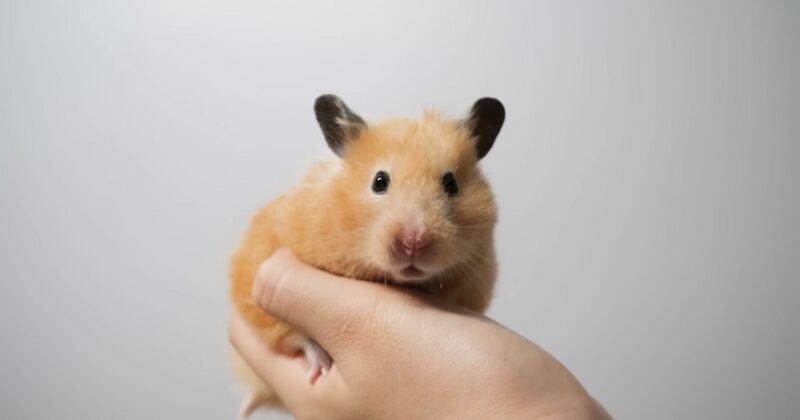
You can either choose to buy a teddy bear hamster from a pet store for about $20 or adopt them for free. Although the initial cost of purchasing them is low, the total expenses of fostering them may add up and reach heights. So before you plan to pet one, make sure that you have sufficient funds to purchase essential hamster equipment.
Here is a list of all the required types of equipment and their average price which will help you know the approximate budget you should have to bring a hammy home.
- Cage: Owing to their large size, teddy bear hamsters require a large-sized cage to live and scamper around. You can either purchase one from a pet store. Pet store offers a variety of hamster bin cages ranging from $20-$100.Alternatively, you can create your hamster bin cage using our DIY how-to guide and save some dollars.
- Bedding: It is essential to ensure that your hamster’s bedding is clean and dry to avoid any type of allergy or health issues. Make sure you’ve got enough bedding supplies for your little one to hide in. You are required to spend another $12-$40 for this.
- Food bowl: You are required to arrange for a food bowl for your hamster to serve them their meal. Although you can feed them with your hands, I’d suggest you get one. Generally, they are not so expensive and will cost you around $5.
- Water Sipper: To ensure that your pet stays hydrated and healthy, attach a water sipper to its cage to ensure a continuous supply of freshwater. This water sipper may cost you somewhere between $6-$12.
- Hideout: Hamsters love to hide, and a place to hide in their cage will surely make them super happy. Spending around $5-$12 to see your little one happy worth it.
- Chew toys: Teddy bear hamsters have long, sharp incisor teeth that never stop growing. So, it becomes important to get them chewing toys to wear them out regularly. They are inexpensive and cost around $2.
- Food: Hamster food supplies cost you around $18. The pet stores offer a variety of packages to choose from to serve your pet’s nutritious requirements.
- Carrier: A carrier is required to carry your tiny rodent when taking him for his medical checkup. However, you may skip purchasing it and create your one using spare cardboard boxes in your house.
FAQs
Are Teddy Bear Hamsters Amiable?
Yes! Teddy Bear Hamsters have an amiable nature. They are docile and have a gentle temperament in comparison to other species. Their high stress tolerance level and relaxed disposition make them easy to care for. They are less inclined to bite, super friendly, and hence my favourite
Can Teddy Bear Hamsters Bite?
Well, it is self-explanatory but Yes! teddy bear hamsters can bite sometimes if they are not handled with care despite their relaxed temperament. Due to their poor eyesight, these little creatures depend on other senses to sense risk and prepare themselves for defence. Therefore, it becomes crucial to approach them slowly and with confidence. They may take trembling hands as a symbol of danger and may react by biting.
How Many Hamsters Survive In A Litter?
A hamster litter may contain up to 20 babies. Nevertheless, the average number stays somewhere between 6-12. These small pups feature closed eyes and ears and require feeding and nursing from their mother. Their body has no fur. However, the two incisor teeth in the front are visible from the birth itself.
When Is The Right Time To Remove The Pups?
The weaning period of a hamster is generally about 2-3 weeks long. After that, they can be fed with moist food and water to flourish into full-grown individuals.
Consider caging the baby hamsters according to their sex after three weeks so that they do not end up mating.
Are Syrian Hamsters And Teddy Bear Hamsters the Same?
No, there is not much difference between Syrian hamsters and Teddy Bear hamsters but they are not the same per se. A Syrian hamster typically has a round and fluffy body featuring a variety of fur coats. Some of them are short-haired and are known to be fancy bears whilst the one with long hair is known as teddy bear hamsters. There isn’t much difference between the two, and the names are often used interchangeably. Nevertheless, breeders love to put them as different breeds to match hamster’s patterns.
Conclusion
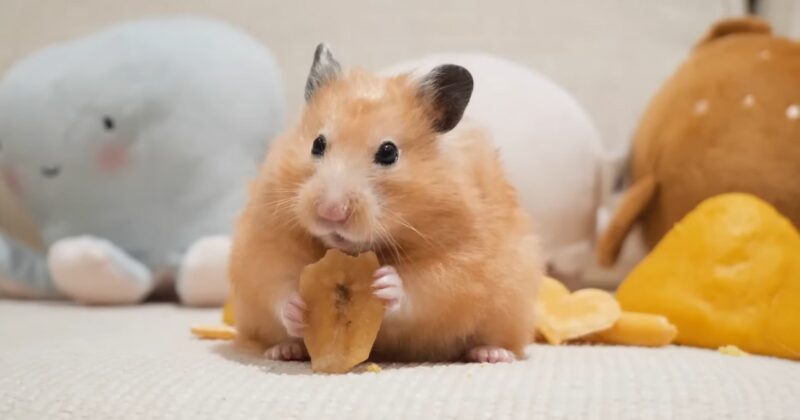
To sum up, if you are planning to buy a hamster for the first time, teddy bear hamsters are the best choice as they are low-maintenance pets and also have a good temperament.
This article covers everything you need to know about them before bringing them home. Hope you have a great journey as a hamster parent.
Related Posts:
- Panda Bear Hamsters - Everything You Need to Know…
- The Impact of Pets on Children's Development -…
- Do Hamsters Hibernate - Everything You Need to Know About
- Busting Common Myths About Pet Behavior - Everything…
- Why Is My Dog Panting and Has Diarrhea? - What You…
- 6 Clinical Signs of Hyperkeratosis in Dogs - Watch…

